Students Navigate College Admissions After Affirmative Action’s End
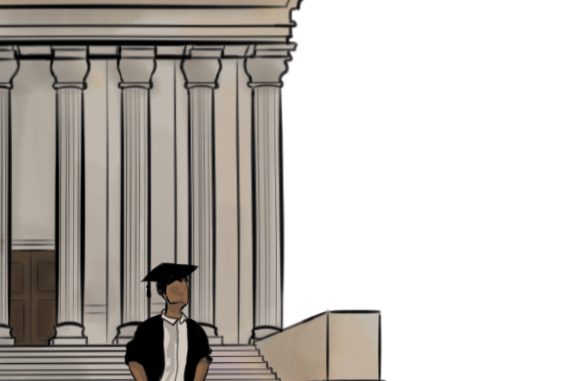
As City High seniors complete the college admissions process this fall, they are the first to experience the effects of the United States Supreme Court’s decision to overrule race-based affirmative action in college admissions. The significance of this decision upon City High students and upon college admissions at large is being discussed and debated among students, teachers, and school administrators.
On June 29, the United States Supreme Court overruled affirmative action in college admissions in a case known as Students for Fair Admissions v. Harvard, on the basis that considering race as a factor in admissions violates the Equal Protection Clause. This would outlaw consideration of race in student applications after 40 years in which institutions of higher education were allowed to consider applicants’ race as a factor for admissions.
According to a statement by the United States Commission on Civil Rights in 1977,
The Supreme Court chose to single out race from a variety of other types of affirmative action, including economic status, generational status, and geographic location.
In the Supreme Court’s majority opinion, Chief Justice John Roberts stated that the ruling still allows admissions officers to consider students’ racial backgrounds.
“We have permitted race-based admissions only within the confines of narrow restrictions,” Roberts wrote. “University programs must comply with strict scrutiny, they may never use race as a stereotype or negative, and—at some point—they must end. Respondents’ admissions systems—however well-intentioned and implemented in good faith—fail each of these criteria.”
In her dissenting opinion, Justice Sonia Sotomayor stated that the new law will have a “devastating impact.”
“The majority’s vision of race neutrality will entrench racial segregation in higher education because racial inequality will persist so long as it is ignored,” Sotomayor wrote.
Maureen Beran, a City High guidance counselor, believes that affirmative action was a necessary step in the direction of more equitable access to education and that it had a significant and positive effect in improving admissions opportunities for some City High students.
“I think its removal will have a negative impact for our students of color,” Beran said. “Although there are so other many things that these colleges consider in applications, having the opportunity to consider race as a factor was helpful.”
City High is among the most diverse high schools in Iowa. 48% of its student body is made up of students from minority racial groups. 52% of students are white, 19% are Black, 19% are Hispanic, 5% are multi-racial, and 2% are Asian, as of 2022. For these students, the Supreme Court ruling could affect their opportunities in higher education.
Senior Ariel Johnson ‘24 stated that affirmative action is necessary in aiding students from marginalized backgrounds.
“Kids who aren’t white, we have to try really hard just to get into college,” Johnson said. “Maybe we have to try even harder [than white kids].”
Johnson believes that race should be considered in college admissions due to its importance in students’ lives.
“A person’s race is a big part of their identity,” Johnson said. “I feel like colleges are seeing me only for my grades, not [for] who I am as a person. If they’re not looking at race, what’s the point of me going to that school?”
Another student, Reyna Roach ‘24, discussed the new ruling in the context of other recent Supreme Court legislation involving marginalized groups.
“I think that this Supreme Court decision came along with a slew of other Supreme Court decisions that don’t say great things about the future of marginalized people in the U.S.,” Roach said. “The fact that they’re so willing to overrule precedent in order to harm marginalized groups is really terrifying. Every time the Supreme Court drops a brief, you never know what’s going to happen. You never know what right is going to be taken away, or how your future is going to be affected. I think that’s damaging to everyone, and I think it’s damaging to youth, especially as we’re trying to consider where we’re going and what the world is going to look like when we’re adults.”
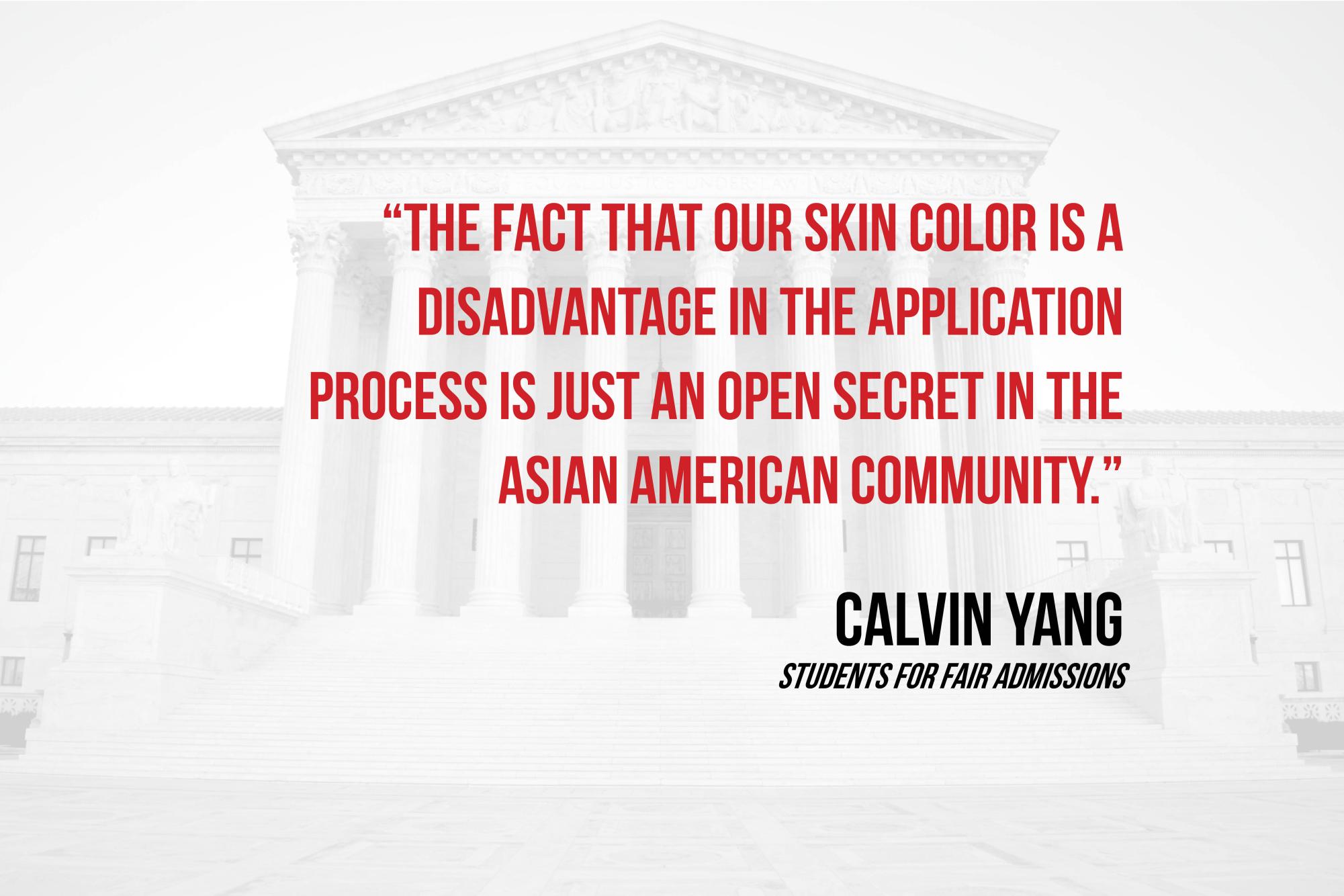
While many students at City High disagree with the Supreme Court’s decision, the Students for Fair Admissions group at the center of the case proclaimed that affirmative action disadvantaged Asian students in the admissions process by unfairly discriminating against Asian applicants.
Calvin Yang, a student who was rejected from a number of Ivy League colleges despite having a top-notch academic resumé, is a member of the Students for Fair Admissions anti-affirmative action advocacy group. Yang wrote in an opinion piece New York Post that he believes affirmative action originates from good intentions but results in discrimination against Asian students.
“The fact that our skin color is a disadvantage in the application process is just an open secret in the Asian American community,” Yang wrote. “I constantly hear from high-school [sic] students who reach out to me concerned about their admissions prospects because of their ethnicity.”
Yang praised the Supreme Court’s decision as a step in the right direction of ending discrimination against Asian students.
“Going forward, Asian students are going to be able to focus more on who they are as people rather than trying to appear less Asian for an admissions officer,” Yang wrote.
In the wake of the Supreme Court’s decision, some members of the City High community question the effectiveness of race-based affirmative action.
Dr. David Brown, a Special Education Strategist at City High, argues that corrective measures may not be as straightforward at correcting or compensating for past discrimination as described in the 1977 Civil Rights Commission.
“Affirmative action works different in theory than in practice,” Brown said. “It was always trying to right the wrong. But when you look at how people see it today: different times, different measures.”
A City High student who did not want to be named shared the opinion that because a disadvantaged person has less access to high-quality education, it is not always effective to admit them to a challenging college or university.
“People say, ‘We’re going to educate those who are more disadvantaged with a higher quality of education,’” an Anonymous City student said. “Oftentimes, when you are disadvantaged, since you have a lower-quality high school education, middle school education, and elementary school education, and parents probably have a lower level of education, chances are, you aren’t going to be ready for [a more advanced education]. . . That’s why there are statistics that show that a significant amount of the students who get into high-quality colleges through affirmative action programs end up dropping. That wastes money and time, because then they have to go to a lower-quality university which suits their abilities. That’s why I think we should look at the root of the problem, and aim to give better funding to elementary, middle, and high schools.”
This student said they felt that affirmative action is inherently racist.
“I feel like affirmative action ends up being racist, just the other way. If you’re ideologically opposed to racism as a concept, then I think it would be hypocritical to allow racism to ‘counter older racism.’ It’s kind of like, if you’re a pacifist, and you decide, ‘Okay, I’m going to kill everyone who wants war.’ You could say [that] it works.”
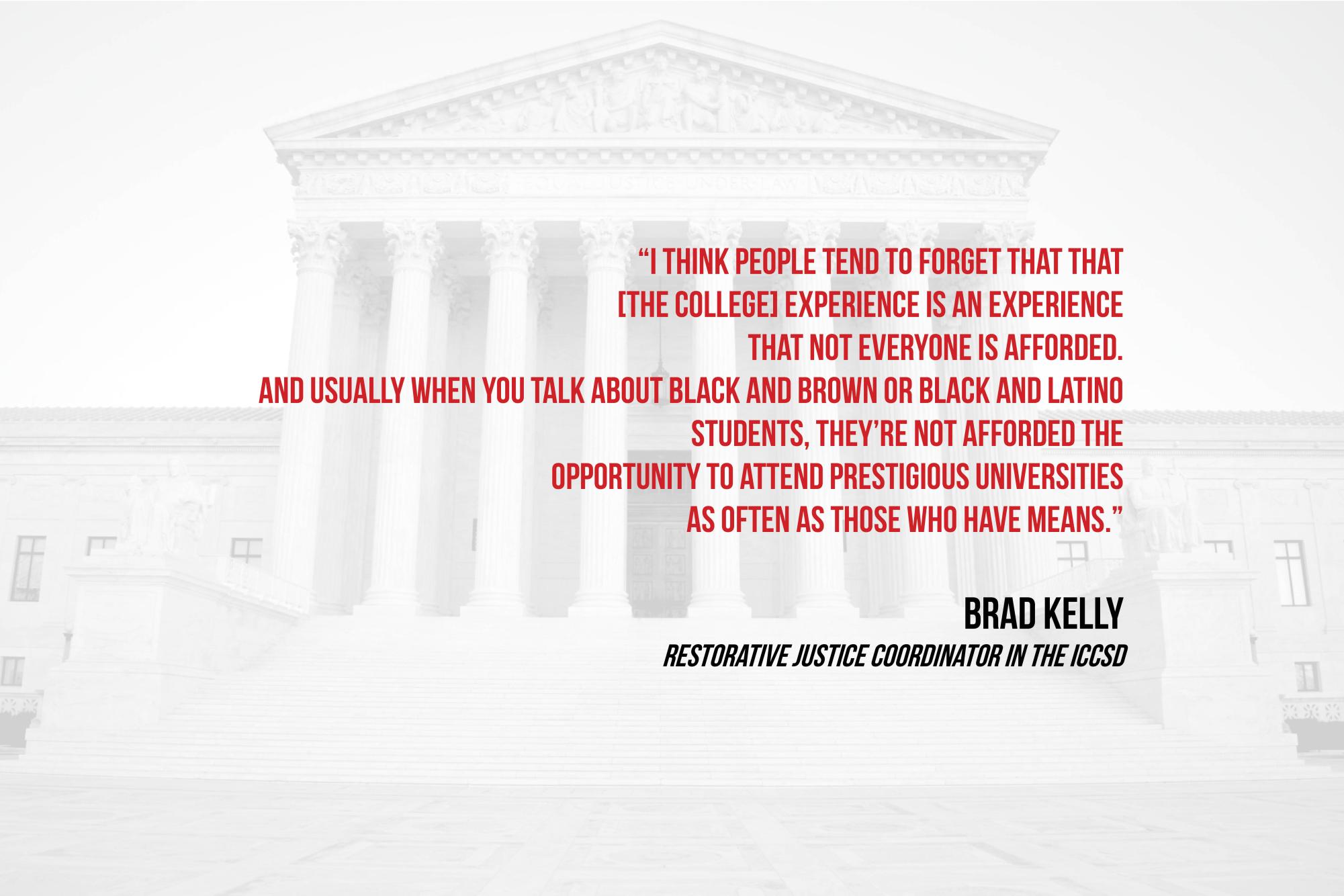
Brad Kelly, the Restorative Justice Coordinator in the ICCSD, counters these perspectives.
“It works, and it works for the people it works for,” Kelly said. “The argument is that, ‘Okay, well, you were let into the school because you are Black, or because you are a minority–not necessarily because you are qualified.’ And I think sometimes, when you look at college admissions, yes, it’s great if you have students who have 3.5 or 4.0 [GPAs], and I’m not saying that it needs to be lowered to have this equal balance of minority students in the school. I just know it was working for the people who it was working for, and it was working against the people who felt it was not fair.”
Kelly provided a historical context.
“In the Jim Crow South, people were not necessarily afforded the opportunity to go to a regular public school until they said that they were not Black,” Kelly said. “In some areas, Black kids could go to school with white kids, whereas [in] other areas, there was still segregation. So I know it feels like, ‘Well, I can’t get into this school because they’re choosing Black students over me, and I’m more qualified.’ But sometimes I think people tend to forget that that [the college] experience is an experience that not everyone is afforded. And usually when you talk about Black and brown or Black and Latino students, they’re not afforded the opportunity to attend prestigious universities as often as those who have means.”
Roach disagreed with the notion that affirmative action gives applicants from marginalized groups an unfair advantage.
“Any advantage they get from affirmative action is nowhere near the generational advantages white applicants and students have had for centuries upon centuries at the deficit of other minority groups,” Roach said.
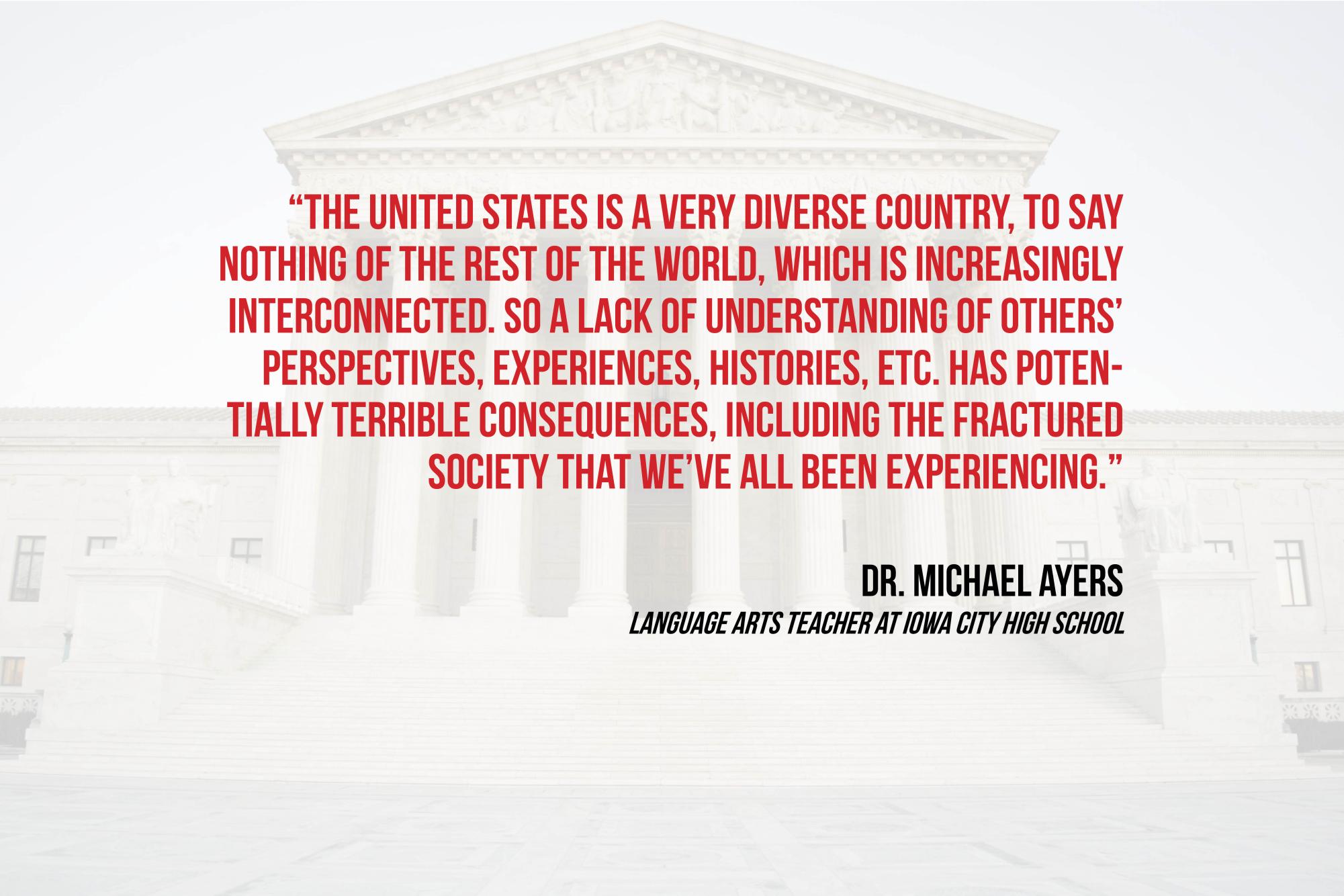
In 1996, as a result of Proposition 209, the State of California banned race-based affirmative action in higher education. One year later, the percentage of Black and Latino students admitted to UCLA and UC Berkeley decreased by 40%, according to the Center for Studies in Higher Education. Although it is too early to tell what the effects of the new Supreme Court decision will be, the evidence from California’s ban of race-based affirmative action predicts that many colleges will become less racially diverse beginning in fall 2024.
As students and employees of a public high school with a racially diverse student body, City High Community members shared their perspective about the importance of a diverse academic community for teaching and learning.
City High Principal John Bacon expressed his support for affirmative action and emphasized the importance of diversity in education.
“I think City High is a prime example of the value of diversity,” Bacon said. “Our diversity here makes this a better school. Our diversity here at City High helps students get a better education because we’re bringing lots of different perspectives and backgrounds to the table. So anything a school can do to make sure its student population is diverse is a very healthy and good thing that will benefit the school in the long run.”
Dr. Michael Ayers, an English Language Arts Teacher at City High, emphasized the importance of diversity on college campuses.
“To me, all kinds of diversity are so obviously beneficial that it’s hard for me to understand someone arguing otherwise,” Ayers said. “This is, obviously, a very diverse country, to say nothing of the rest of the world, which is increasingly interconnected. So a lack of understanding of others’ perspectives, experiences, histories, etc. has potentially terrible consequences, including the fractured society that we’ve all been experiencing.”
Roach stated that diversity has a direct impact on the quality of education.
“I think a diverse campus is necessary because that’s what the world is like,” Roach said. “I think you can’t do good research, or good teaching, unless you’re making sure to include the perspectives of the world, and not just trying to focus on your own perspective. I also think it helps professors to understand that their audience isn’t a homogenous group. In my experience, I’ve been taking classes at the University [of Iowa] since sophomore year. And being in classes and expressing myself as a Native person genuinely changes how the professors think about teaching. Because they can’t brush Native issues under the rug in the same way, they can’t take shortcuts when trying to discuss issues around my identity, and I assume, other identities of other students in the class, because there’s someone from that community right there in front of you. And this goes not just for professors, but also for every single person on the community. You can’t ignore the existence of certain groups if they’re literally standing right next to you.”
Johnson spoke about the social impact of diversity on an educational community.
“It’s really important. And not having diversity in any good colleges will obviously make the school seem bad. Students who are diverse won’t really connect as much as with the other students, because there are no other students of color there,” Johnson said.
Administrators in higher education are also questioning the Supreme Court’s ruling. Whitney Terrell, a former resident of Iowa City and an Associate Professor of Creative Writing at the University of Kansas City, functions as an admissions officer for the Creative Writing Department and has, until the new law, considered race to be an important part of the application. Terrell thought it was absurd that race can no longer be considered.
“If you think about it in practical terms, it’s a very Orwellian ruling,” Terrell said. “It’s saying that certain kinds of thoughts are illegal.”
Terrell pointed out that there is no ruling against considering other background factors such as economic or geographic diversity.
“I don’t understand why you would want to have a law that prevents me or anyone else in our MFA program from trying to get a diverse class, because that is what is going to be better for our writers,” Terrell said. “Any American writer writing about America is going to have to understand and think about race. Race is one of the issues that makes the U.S. what it is. If you have a class that is all one race, you really aren’t going to be able to have very interesting conversations or thoughts about race, and particularly when it pertains to someone’s writing.”
Terrell emphasized the importance of learning about others during one’s time in college.
“Learning about cultural traditions other than your own is one of the things that you should be doing in college,” Terrell said. “You should be having experiences that are outside of the experiences that you had in your family.”
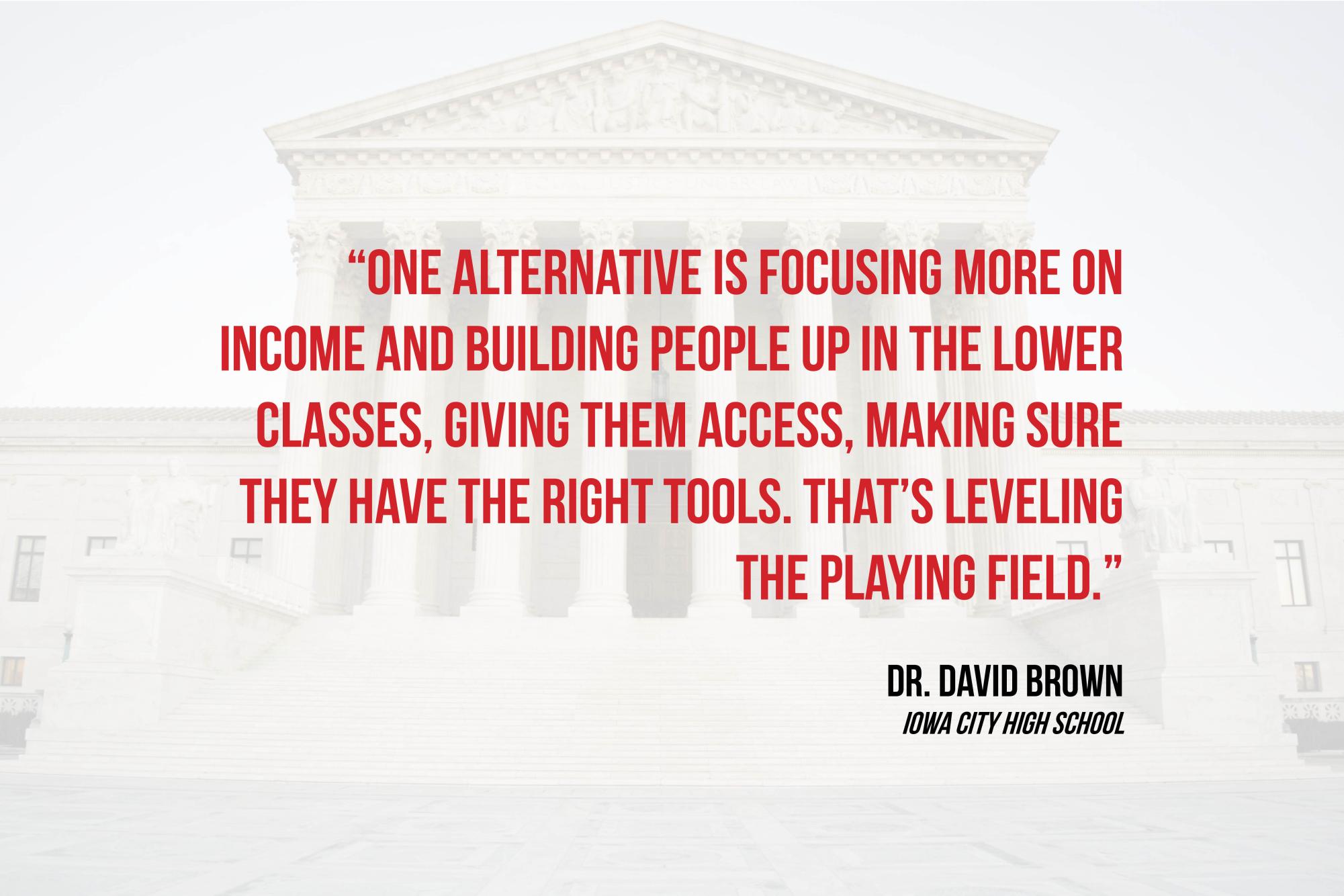
Members of the City High community hold nuanced opinions on the long-term results of barring race-based affirmative action to higher education.
Dr. Brown stated that affirmative action is not the only way to create diversity in colleges.
“Can you survive without it? Yes,” Brown said. “People have. And that’s why California is a good way to look at it. Because they made it through, and that’s a big state.”
Brown cited California’s 1997 ruling that eliminated race in favor of other factors, and advocated for a focus on a student’s economic background rather than their race.
“Focusing more on income and building people up in the lower classes,” Brown said. “Giving them access. Making sure they have the right tools. That’s leveling the playing field.”
The medical school at the University of California, Davis has used an admissions system known as the adversity scale since 2012. In addition to conventional measurements such as grades and recommendations, applicants are ranked on an “adversity scale” of 0 to 99 that involves eight categories of socioeconomic status (such as parental education and family income), with the highest scores corresponding to the students from the most disadvantaged backgrounds. A result of the adversity scale is that 84% of the most recently accepted class of the medical school at the University of California, Davis, is made up of students from disadvantaged backgrounds.
Kelly expressed hope that Historically Black Colleges and Universities will see higher enrollment as a result of the Supreme Court’s decision.
“With the shift in the law, I have a really good feeling that Historically Black Colleges will see an increase in students, Black and possibly Latino, because of the shift in affirmative action at other schools,” Kelly said.
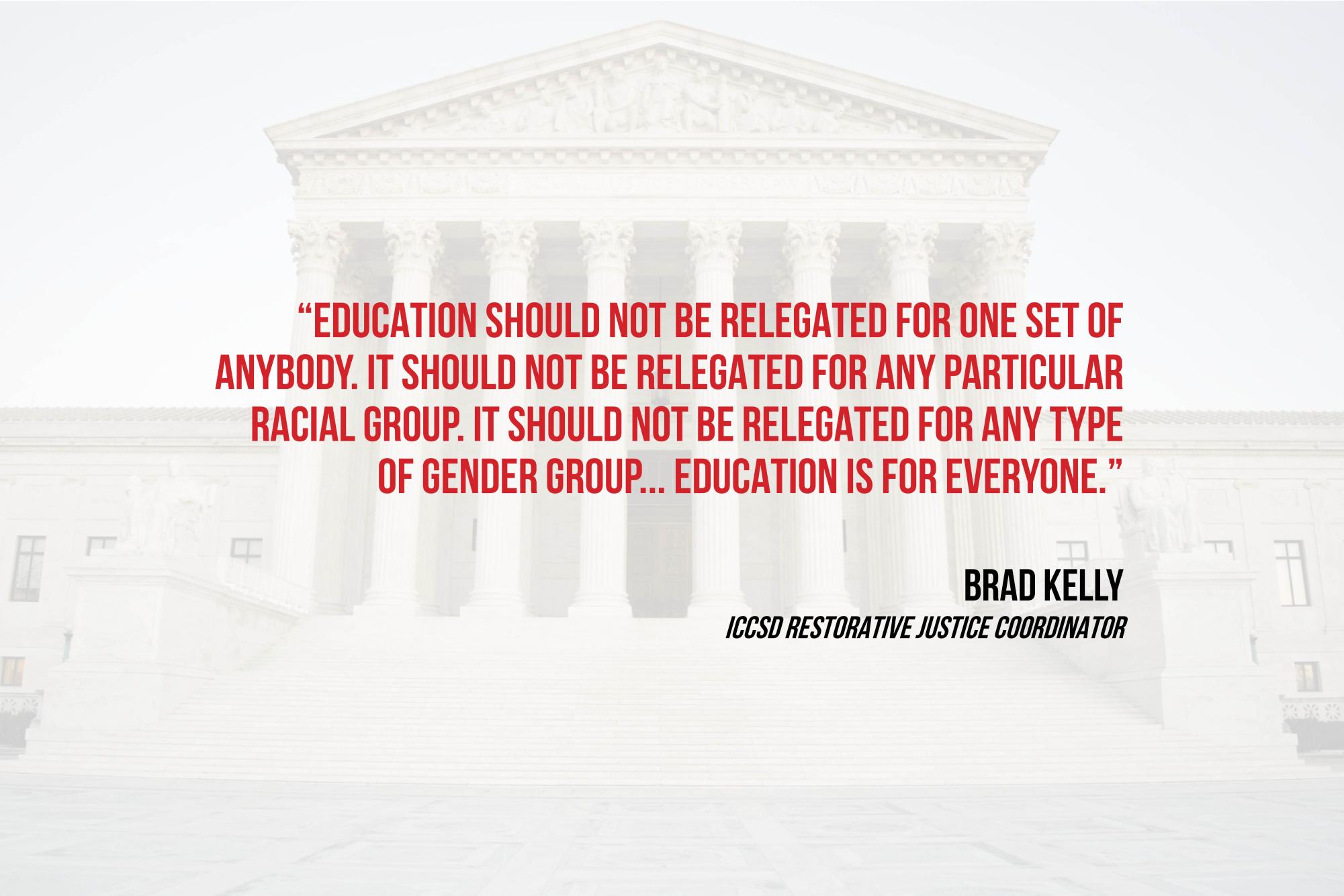
Roach believes that the personal essay is important for students who still want to include their racial background in their applications.
“As a Native student, a lot of my history classes have been heavily impacted by the fact that my white history teachers don’t really know anything about Native people and our histories, which has led me to arguments with my teachers and racist incidents in my classes, which have impacted my education,” Roach said. “And I think this goes for a lot of racially marginalized students. Our identities impact our education. They impact our opportunities in a very tangible way. In the admissions process, we are still able to express that, but we can no longer do it explicitly.”
Maureen Beran, who was born in Kenya and emigrated to the United States at the age of 11, describes her experience of taking a test in school shortly after her arrival.
“It was hard for me to understand the question, because the cultural context does at times come into play, based on how a question is written. I hadn’t spent a lot of time in the United States, so I didn’t get the question–not because I didn’t know the material being tested, but because I didn’t understand the context. . . One of the things I know they’ve always worked on with these standardized assessments is making sure they’re culturally competent by taking culture into consideration.”
Beran proposed alternatives that focus on students of color when they are in high school.
“Universities partnering with and working with high schools,” Beran said. “The District has the Grow Our Own program, and the aim for that is to recruit current high school students who want to be teachers. They put them in this program while they’re in high school, and help them navigate through it, and also as they go into college and as they work on getting their teaching license. The idea is for them to come back and work for the District, which is great, because the District has identified trying to have more diverse staff members working in the District as an area for improvement. So programs that involve universities partnering with high schools would be ways to make sure they’re reaching students of color, offering opportunities for students of color, and encouraging them to pursue highly selective colleges, even if it may not be that actual college. And having those conversations. That’s a little bit more complex. Alternatives are never super simple.”
Kelly discussed the importance of reconsidering the way that people tend to think about the purpose of education.
“We should stop moving in the space of ambiguity. Education should not be relegated for one set of anybody,” Kelly said. “It should not be relegated for any particular racial group. It should not be relegated for any type of gender group. It wasn’t that long ago that the education of women was not viewed as something that you would normally do. Women could not be doctors.”
Kelly advocated for a more inclusive viewpoint on education.
“One way to remedy this problem is to say that education is for everyone,” Kelly said. “The doctor needs education to be a doctor. The person who is an electrician, they need education too, and their education is just as important as that of a doctor’s. You take the education that you want, so that you can be a contributing member of society. . . Just because you’re a doctor, you’re still going to need an electrician, and you’re going to hope that the person wiring your house has the best education they could possibly have.”
Dr. Ayers contextualized the issue of affirmative action in light of recent legal changes in the United States.
“I think that this change is coming at a moment when a number of states with conservative governors are explicitly trying to make changes to how universities go about their business,” Ayers said. “For conservatives, universities are an easy punching bag, especially right now. I think that if you went back a few decades, the overwhelming majority of both Democrats and Republicans would say college matters. But now, that belief is eroding on the Republican side. And it’s hard to separate what people see as the value of everyone going to college for knowledge and skills in a 21st Century economy, and what conservatives see as ‘woke’ culture and policies that they disagree with. I think a further erosion of the belief, or a further divide on the belief, that college is important, is a bad thing for our country.”
Roach discussed their perspective as a Native American student.
“Legally, we’re not a racial category,” Roach said. “We’re citizens of nations that precede the United States. So that means that hypothetically, affirmative action should not affect citizens of federally recognized tribes. However, I do think that it is forcing universities to be scared of efforts to diversify their student population, which I think is a really bad thing. . . Now, there is legal precedent for universities to screw over or under represent marginalized people within the country, and I think that’s a very dangerous path we’re going down.”
Your donation will support the student journalists of Iowa City High School. For 2023, we are trying to update our video and photo studio, purchase new cameras and attend journalism conferences.







